
Pavan
B.Tech
2 years
Courses by Pavan

CBSE 8 Geography
Human resources play a vital role in shaping a nation's development, with people being the ultimate resource that transforms natural bounties into usable wealth. Population distribution is uneven across the globe due to various geographical, social, and economic factors, leading to significant discrepancies in population density. Understanding population growth trends and compositions, including birth and death rates and migration patterns, is fundamental to analyzing demographic changes over time.

CBSE 8 Civics
The chapter discusses the crucial role of laws in protecting individuals from exploitation in various sectors, particularly focusing on labor rights and environmental safety. It highlights cases like the Bhopal gas tragedy to illustrate the consequences of inadequate safety regulations and law enforcement. The text emphasizes the need for continuous advocacy to ensure social justice and fair treatment in the workplace and the environment.

CBSE 8 Mathematics
Graphs serve as visual representations of data, enabling quick and easy understanding, especially when showing trends or comparisons. Different types of graphs, particularly line graphs, display continuously changing data over time. The relationship between independent and dependent variables can be effectively demonstrated through these graphs, guiding insights into variations and relationships between quantities.

CBSE 10 Science
The chapter explores the interconnections within ecosystems and the impact of human activities on the environment. It delves into the roles of producers, consumers, and decomposers while highlighting the importance of maintaining a balanced ecosystem. Additionally, it examines the issues of ozone layer depletion and waste management, emphasizing the significance of biodegradable and non-biodegradable waste on environmental health.

CBSE 10 History
The development of print culture from its origins in East Asia to its establishment in Europe and India is explored. The chapter highlights how print transformed society by democratizing access to information, fostering new forms of literacy, and instigating social and religious reform. The impact of the printing press on reading habits, public debates, and nationalism are also significant themes discussed.

CBSE 11 Biology
Chemical coordination and integration in the human body is primarily achieved through hormones produced by various endocrine glands, which regulate metabolic processes, growth, and various physiological functions. Hormones act as intercellular messengers, and their effects are mediated through specific receptors on target cells. The chapter discusses the structure, function, and mechanisms of action for major endocrine glands and their hormones, including the hypothalamus, pituitary, thyroid, and adrenal glands, along with their impact on health and disease.

CBSE 12 Biology
The content dives into biodiversity, highlighting its various components—genetic, species, and ecological diversity—and discussing the critical need for conservation due to the alarming rates of species loss driven by human activities. It describes the patterns of biodiversity distribution, particularly the greater species diversity in tropical regions, and emphasizes the importance of biodiversity for ecosystem functionality and survival. Effective conservation strategies are outlined, stressing both in situ and ex situ methods to protect the rich biological heritage of Earth.

CBSE 12 Chemistry Part 1
Coordination compounds form a crucial part of modern inorganic chemistry, exhibiting unique structures and properties that are foundational for biological systems and various industrial applications. Alfred Werner pioneered the theoretical framework for understanding coordination compounds, proposing key concepts regarding their bonding and structure. The chapter explores ligand types, isomerism, nomenclature, and the principles of valence bond and crystal field theories.

CBSE 12 Chemistry Part 2
Biomolecules are essential components of living organisms, including carbohydrates, proteins, nucleic acids, and hormones, which play critical roles in biological processes. Carbohydrates are classified into monosaccharides, disaccharides, and polysaccharides, while proteins are polymers made from amino acids linked by peptide bonds. Nucleic acids like DNA and RNA serve as the genetic material responsible for heredity and protein synthesis. Vitamins, required in small amounts, and hormones, functioning as intercellular messengers, are also significant components in maintaining physiological balance.

CBSE 8 Science
The chapter explores the properties of light, specifically its reflection and the formation of images by mirrors. It explains the laws of reflection, types of reflection, and the structure of the human eye, emphasizing the importance of vision. Additionally, it addresses the challenges faced by visually impaired individuals and introduces the Braille system as a means for reading and writing.

CBSE 8 History
The chapter discusses the evolution of nationalism in India from the 1870s to 1947, highlighting the emergence of political associations, the role of the Indian National Congress, and the radical shift in strategies as various groups mobilized against British rule. It emphasizes major events such as the partition of Bengal, the rise of the Swadeshi movement, the impact of World War I, and the significant contributions of leaders like Mahatma Gandhi and Subhas Chandra Bose, culminating in the Indian independence movement and the subsequent partition of the country.

CBSE 9 Economics
Food security in a nation is contingent on the availability, accessibility, and affordability of nutritious food for all citizens. Vulnerable populations, particularly those below the poverty line, face chronic and seasonal hunger exacerbated by natural disasters and economic challenges. Government interventions through programs like the Public Distribution System (PDS) and various poverty alleviation initiatives play a crucial role in enhancing food security, alongside cooperative efforts that facilitate food access across different strata of society.

CBSE 10 Geography
The chapter discusses the integral role of transportation and communication in shaping a nation’s economy and facilitating trade. It highlights the diverse means of transport including road, rail, air, and waterways in India, emphasizing their development and interconnectivity. Alongside transportation, the chapter addresses the evolution and significance of communication systems which enhance connectivity and support economic growth.

CBSE 10 Civics
The chapter explores the outcomes of democracy, assessing what can be reasonably expected from democratic governance. It addresses the dichotomy between the ideal of democracy and its practical applications, including accountability, responsiveness, and social equity. The analysis includes an examination of economic growth, social inequality, and the accommodation of social diversity within democratic frameworks.

CBSE 10 Economics
The chapter discusses consumer rights within the context of market operations and the necessity for awareness and participation in the consumer movement. It highlights case histories of consumer exploitation and the role of legal institutions in compensation. Additionally, it outlines organizations aiding consumers and critical issues within the consumer movement in India.

CBSE 10 Mathematics
The chapter introduces the concept of probability, focusing on theoretical probability and empirical probability. It explains the importance of equally likely outcomes and provides various examples to illustrate how to calculate the probability of different events, including impossible and certain events. The chapter culminates in exercises that test the understanding of probability through real-world scenarios.

CBSE 11 Physics - Part 1
Gravitation explains the attractive force between masses, a crucial concept in understanding celestial mechanics and planetary motion. The chapter discusses the historical development of gravitational theory from Galileo to Newton, including Kepler's laws of planetary motion and the universal law of gravitation. Essential properties like gravitational potential energy, escape velocity, and orbital mechanics of satellites are also covered.

CBSE 11 Physics Part 2
This chapter discusses the properties and behavior of waves, including their types, propagation, and mathematical descriptions. Emphasis is placed on mechanical waves, both transverse and longitudinal, as well as the principles of superposition and reflection. The chapter concludes with applications of wave phenomena, such as standing waves, beats, and sound propagation in different media.

CBSE 11 Psychology
Motivation and emotion are extensively explored in terms of their definitions, types, and interactions. The chapter differentiates between biological and psychosocial motives, discusses Maslow’s hierarchy of needs, and offers insights into the nature of emotions and their expressions. It emphasizes the importance of managing both negative and positive emotions for improving personal well-being and interpersonal relations.

CBSE 11 Political Theory
Secularism is crucial for ensuring equality in diverse societies and is a topic of debate, particularly in the context of India. It opposes both inter-religious and intra-religious domination while promoting freedom and equality among different religious communities. The chapter contrasts different models of secularism, particularly the Western and Indian frameworks, highlighting their unique characteristics and critiques.

CBSE 11 Indian Constitution at Work
The chapter delves into the philosophy behind the Indian Constitution, exploring the moral values it embodies and the intentions of the framers. It emphasizes the importance of understanding constitutional debates, the core features such as individual freedoms and social justice, and the critiques aimed at the Constitution. The text concludes by discussing its achievements and limitations, offering a reflection on its ongoing relevance in contemporary governance.

CBSE 11 Introducing Sociology
The chapter discusses the methodological foundations of sociology, focusing on how sociologists gather knowledge and the significance of both qualitative and quantitative methods. It emphasizes the tension between objectivity and subjectivity in social sciences, the importance of reflexivity, and the different approaches like participant observation, surveys, and interviews in sociological research.

CBSE 11 Sociology Understanding Society
The chapter delves into the foundational figures of Indian sociology, notably G.S. Ghurye, D.P. Mukerji, A.R. Desai, and M.N. Srinivas, each of whom contributed uniquely to the discipline within the context of India's colonial and post-colonial conditions. These pioneers navigated the challenges of adapting Western sociological traditions to India's distinct cultural and social realities, paving the way for sociology to evolve as a relevant academic field in India. The discussions also address the complexities surrounding caste, tribal communities, and the notion of tradition in the face of modernization.

CBSE 11 Fundamental of Physical Geography
Biodiversity encompasses the variety of life on Earth, which is fundamentally vital for human existence. It plays significant ecological, economic, and scientific roles, with three primary levels: genetic, species, and ecosystem diversity. However, human activities have led to a rapid decline in biodiversity, necessitating concerted conservation efforts.

CBSE 11 History
The chapter outlines the contrasting paths of modernization taken by China and Japan in the 19th and 20th centuries. While Japan successfully transitioned into a modern nation-state and industrial power through its embrace of Western practices combined with traditional values, China faced turmoil and struggles, culminating in the Communist Revolution that sought to eradicate inequalities but resulted in a repressive political climate. The chapter emphasizes the importance of historical context and cultural identity in shaping national trajectories.
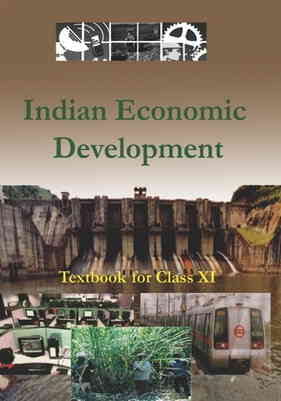
CBSE 11 Indian Economic Development
Comparative trends in economic and human development indicators of India, China, and Pakistan reveal the varied developmental strategies adopted by these countries. While all three nations began their respective developmental paths around the same time, their subsequent growth trajectories have diverged significantly, especially after the introduction of economic reforms. The chapter highlights how these strategies have led to differences in economic performance, demographic indicators, and human development outcomes across the three countries.

CBSE 11 Statistics for Economics
Statistical tools and methods play a vital role in analyzing economic activities by guiding the collection, processing, and interpretation of data. The chapter outlines the steps involved in designing a project and developing effective surveys, emphasizing how to identify target groups and present data through appropriate graphical representations. By applying statistical measures, one can draw meaningful conclusions and make informed decisions based on collected data.

CBSE 11 Human Ecology and Family Sciences Part I
Health, nutrition, and hygiene are vital components of human well-being, with interrelated dimensions encompassing social, mental, and physical health. This chapter discusses the significance of maintaining good health through proper nutrition, hygiene practices, and the consequences of malnutrition. Furthermore, it outlines the roles of various health care services and the importance of sanitation in preventing diseases, emphasizing that both undernutrition and overnutrition lead to serious health issues.

CBSE 11 Human Ecology and Family Sciences Part II
The chapter addresses the care and maintenance of fabrics, emphasizing the significance of proper cleaning and preservation strategies that enhance durability and appearance. It outlines various methods for stain removal, laundry techniques, and the importance of using appropriate cleaning agents. Additionally, the chapter discusses the role of care labels in guiding consumers in maintaining their fabrics correctly and identifies factors affecting fabric care including fiber composition and finish.

CBSE 11 Chemistry Part 1
Chemical equilibria are essential in biological and environmental processes, influencing reactions and substance interactions. The dynamic nature of equilibrium involves continuous particle exchange, leading to a constant vapor pressure in closed systems. Understanding the law of equilibrium, factors affecting it, and concepts like ionization are crucial for grasping the behavior of acids, bases, and salts in various reactions.

CBSE 11 Chemistry Part 2
Hydrocarbons consist solely of carbon and hydrogen atoms and are crucial energy sources derived from coal and petroleum. This chapter details the classification of hydrocarbons into alkanes, alkenes, alkynes, and aromatic hydrocarbons, each with distinct properties and reactions. It also explores nomenclature, isomerism, and various chemical reactions, including substitution and addition reactions.

CBSE 12 Physics Part 1
The chapter discusses electromagnetic waves, beginning with the concept of displacement current introduced by Maxwell to reconcile inconsistencies in Ampere's law. It highlights Maxwell's equations, the relationship between electric and magnetic fields, and the generation of electromagnetic waves through accelerated charges. Additionally, the chapter outlines the electromagnetic spectrum and its various applications in technology.

CBSE 12 Physics Part 2
The chapter covers semiconductor electronics, introducing the fundamental concepts of semiconductors, their classifications, and how doping alters their properties. It also explains the formation and behavior of p-n junctions and their applications in diodes and rectifiers.

CBSE 12 Psychology
Groups play a crucial role in shaping individual behavior and social interactions. They can be defined by interdependence, shared goals, and structured roles. Different types of groups fulfill various needs, such as security and self-esteem, while also presenting challenges like social loafing and groupthink. Understanding group dynamics enhances our awareness of how we function within social systems.

CBSE 12 History - 1
The chapter explores the philosophical, religious, and cultural developments in ancient India, focusing particularly on the evolution of Buddhism and Jainism alongside other contemporaneous ideas. It examines the significance of thinkers like the Buddha and Mahavira, the role of texts, architecture like stupas, and the interactions between various traditions shaping early Indian society. Through these themes, the enduring legacies of these beliefs are highlighted in both historical and contemporary contexts.

CBSE 12 History - 2
The chapter explores the agrarian society in India during the Mughal period, focusing on the relationships between peasants, zamindars, and the state. It highlights the intricate dynamics of agricultural production, land ownership, and the socio-economic structures that evolved within rural communities. The chapter also examines source materials, particularly the Ain-i Akbari, which provides valuable insights into agrarian practices and socio-political relations of the time.

CBSE 12 History - 3
The making of the Indian Constitution reflects the intricate process shaped by historical upheavals, diverse aspirations, and intense debates among its makers. Key figures in the Constituent Assembly negotiated various interests, ultimately framing a law suited to India's unique socio-political landscape, characterized by its commitment to democracy, rights, and secularism. The Assembly's discussions underscored the significance of individual liberties while addressing minority and group rights within the context of a unified nation-state.

CBSE 12 Geography - Fundamentals of Human Geography
This chapter delves into international trade, highlighting its evolution from barter systems to modern trade practices. It discusses the role of various factors such as national resources, economic development, and transport in shaping trade dynamics, as well as the significance of global trade organizations like the WTO. The chapter concludes by analyzing the implications of international trade on economies and societal structures.

CBSE 12 Geography - Practical Work in Geography Part 2
The chapter discusses the fundamental principles of Spatial Information Technology and its application in Geographical Information Systems (GIS). It explores the integration of spatial and attribute data, types of data used, and the advantages of GIS over traditional mapping methods. Furthermore, it emphasizes on data processing techniques and the importance of spatial analysis in decision-making.

CBSE 12 Geography - India People And Economy
Environmental pollution is primarily caused by human activities that release harmful substances into various ecosystems. Key types of pollution include air, water, land, and noise pollution, each with specific sources and consequences on health and the environment. Urban areas significantly contribute to these issues through waste disposal challenges and the growth of slums, while efforts for ecological restoration and public awareness are crucial for mitigation.

CBSE 12 Indian Society
Practical research projects provide hands-on experience with sociological methods, emphasizing the differences between theoretical knowledge and practical application. By engaging in real research, students confront potential challenges while honing their skills. The chapter outlines various research methods, suggesting topics for projects that allow students to explore contemporary social issues.

CBSE 12 Social Change and Development in India
The chapter explores the significance of social movements in shaping societies and promoting social change, particularly within the Indian context. It discusses various movements, including environmental, women's, and labor movements, highlighting their unique characteristics, goals, and the challenges they face. The interplay between old and new social movements is examined, emphasizing their influence in advocating for rights and systemic reform across different segments of society.
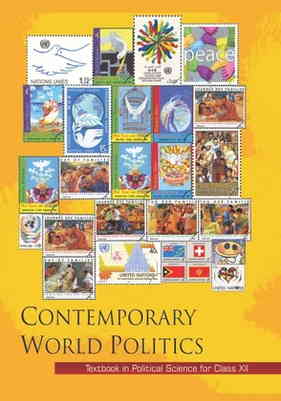
CBSE 12 Political science
Globalisation is a multidimensional concept that encompasses political, economic, and cultural aspects. The chapter explores its implications, focusing on how globalisation affects and is influenced by various entities, particularly highlighting India's position in this global narrative. Additionally, it sheds light on the resistance movements against globalisation, which critically evaluate its effects on local cultures and economies.

CBSE 12 Politics in India Since Independence
The chapter provides an overview of significant political developments in India over the last two decades, tracing the complexities of coalition politics, the rise of caste-based parties, and the implications of landmark movements such as the Mandal issue and the Ram Janmabhoomi movement. It highlights the changing dynamics of political representation, the emergence of new political forces, and the evolving nature of governance in an increasingly multi-party system. The analysis emphasizes the importance of understanding these transformations in the context of India's democratic framework.
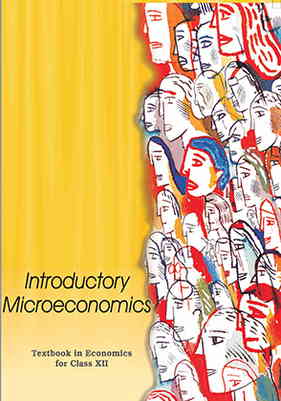
CBSE 12 Introductory Microeconomics
Market equilibrium is achieved when the quantity demanded by consumers equals the quantity supplied by firms, resulting in a stable price and quantity in the market. Understanding the behavior of supply and demand helps in analyzing market shifts, which affect equilibrium price and quantity. The influence of government interventions, like price ceilings and floors, further illustrates the complexities of maintaining market balance.

CBSE 12 Introductory Macroeconomics
An open economy is defined by its interactions with other countries through trade in goods, financial assets, and labor. Foreign trade significantly influences domestic aggregate demand as it involves both leakages and injections into the economy. The balance of payments includes crucial accounts such as the current account and capital account, which reflect the status of a country’s international transactions. Understanding how exchange rates and economic policies interact is essential for managing an open economy effectively.

CBSE 12 Home Science part 1
The chapter discusses the importance of services, institutions, and programs designed for children, youth, and the elderly. It highlights the vulnerabilities these groups face due to socioeconomic factors and the necessary interventions that can support their growth and well-being. Furthermore, it outlines career opportunities and essential skills required to manage such institutions effectively.

CBSE 12 Home Science part 2
Corporate communication and public relations play a crucial role in managing organizational interactions with various stakeholders. Effective communication shapes public perception, enhances organizational reputation, and is essential for employee satisfaction and engagement. Both internal and external communication strategies are fundamental for maintaining a positive organizational image and facilitating successful public relations initiatives.
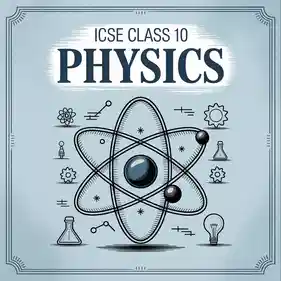
ICSE 10 Physics
Radioactivity involves the spontaneous emission of radiation from unstable atomic nuclei, with three primary types of emissions: alpha particles, beta particles, and gamma rays. The chapter also discusses radioactive decay, nuclear reactions such as fission and fusion, and the concept of half-life, which dictates the decay rate of isotopes. Practical applications range from medical treatments and industrial uses to archaeological dating, emphasizing the importance of safety measures when dealing with radioactive materials.

ICSE 10 Chemistry
Organic chemistry focuses on carbon compounds, particularly those containing C–H bonds. Key concepts include the classification of hydrocarbons, the significance of functional groups, and IUPAC nomenclature rules for organic compounds. The chapter also covers combustion reactions and isomerism, highlighting the diversity and complexity in organic molecules.

ICSE 10 Maths
Probability is quantified by the likelihood of events occurring, represented on a scale from 0 to 1. Key concepts include experiments, trials, outcomes, and their relationships, along with classical and simple event probabilities. Complementary events further underscore the inverse relationship of event probabilities.
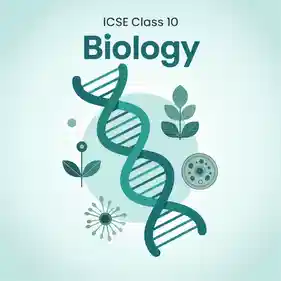
ICSE 10 Biology
Pollution encompasses the introduction of harmful substances into the environment, leading to negative impacts on living organisms and ecosystems. There are various types of pollution including air, water, soil, and noise, each with unique causes and effects. Addressing pollution requires collective efforts through prevention measures, regulations, and personal responsibility to promote a cleaner environment.

ICSE 10 Geography
Waste management is the process of collecting, transporting, processing, recycling, or disposing of waste materials. Effective waste management is crucial for protecting public health, the environment, and achieving sustainable development. Different types of waste, including solid, liquid, and gaseous waste, originate from various sources and require appropriate disposal methods to mitigate environmental impact.

ICSE 10 History and Civics
The chapter covers significant global events and political developments of the 20th century, particularly focusing on the First and Second World Wars, the establishment of the United Nations, and the emergence of the Non-Aligned Movement. It also explores the dynamics of the Cold War, including the rivalry between the USA and USSR, culminating in the disintegration of the Soviet Union. The effects of these events on international relations and the shift towards a unipolar world dominated by the USA are discussed.

ICSE 10 Economics
Consumer awareness entails understanding one's rights and responsibilities as a buyer, alongside knowledge about available products and services. This awareness aids consumers in making informed choices, protecting them from fraud, and encouraging fair trade practices. Key components include consumer rights, responsibilities, protection laws, and methods to address unfair trade practices.

ICSE 10 Commercial Applications
Public Relations (PR) is crucial for organizations aiming to foster positive relationships with the public and manage their image. Its objectives include creating favorable public perceptions, building trust, and effectively handling crises. Various tools and methods, such as press releases and social media, are employed to communicate with the public, making the role of Public Relations Officer (PRO) vital in navigating these interactions.

ICSE 10 Computer Applications
File handling in Java is essential for reading and writing data, allowing for permanent storage unlike temporary variable memory. The chapter introduces different file types, various Java classes for file operations, and emphasizes the importance of exception handling and data persistence.

ICSE 10 Economic Applications
Money serves as a medium of exchange, a unit of account, and a store of value in the economy. Various forms of money exist, including commodity and fiat money. Banks play a crucial role as intermediaries between savers and borrowers, while the Reserve Bank of India regulates the banking sector and manages monetary policy, supporting economic development through credit and investment mobilization.

ICSE 9 Mathematics
Coordinate Geometry combines algebra and geometry, allowing for the representation and location of points in a plane using coordinate pairs. Key formulas such as the Distance Formula, Midpoint Formula, and Section Formula are fundamental to solving geometric problems through algebraic methods and applications, enabling precise calculations of distances and mid-points.

ICSE 9 Chemistry
Atmospheric pollution poses significant threats to human health, the environment, and climate. Major air pollutants include carbon monoxide, carbon dioxide, sulfur dioxide, nitrogen oxides, and particulate matter, each having harmful effects. The chapter also discusses the greenhouse effect, global warming, acid rain, ozone layer depletion, and methods for controlling air pollution.

ICSE 9 Physics
Electricity is described as the flow of electric charge, while magnetism concerns the forces exerted by magnets, and these phenomena are fundamental to many technologies. Key concepts include electric current, potential difference, and the effects of current in circuits which form the basis for understanding household and industrial applications of electricity and magnetism.

ICSE 9 Biology
Waste generation is the result of human activities producing unwanted materials and managing this waste is crucial for environmental and public health. Various types of waste exist, including biodegradable, non-biodegradable, and hazardous waste, each originating from distinct sources such as households, industries, and medical facilities. Improper waste management leads to pollution, disease spread, and ecological harm, making effective recycling, composting, and community involvement critical.

ICSE 9 History and Civics
The Modern Age in Europe is characterized by significant transformations across political, social, economic, and cultural spheres from the 15th century onwards, encompassing key movements such as the Renaissance, Reformation, and the Industrial Revolution. These developments not only revolutionized European society but also had a profound impact globally, leading to new ideologies and the rise of nation-states. The shift towards scientific inquiry and enlightenment ideals also laid crucial groundwork for modern democracy and capitalism.

ICSE Class 9 Environmental Science
Agriculture encompasses the cultivation of soil, growing crops, and raising animals, serving as a vital livelihood source and contributing to food security and economic stability. Types of agriculture include subsistence, commercial, shifting cultivation, intensive, and organic farming, each playing a unique role in economies. Key factors affecting agriculture include climate, soil quality, water availability, technology, and labor. Modern practices enhance agricultural efficiency but also present various problems that must be addressed for sustainable farming.

ICSE 9 Computer Applications
Conditionals and loops are fundamental concepts in programming that control code execution flow. Conditionals allow the program to execute code blocks based on certain conditions, while loops enable repeated execution of code. The chapter covers the types of conditionals, comparison and logical operators, non-nested loops, their use cases, and best practices for effective implementation.

ICSE 9 Geography
Natural regions are extensive areas characterized by similar climates, vegetation, wildlife, and human lifestyles, classified based on temperature and rainfall. Key natural regions include equatorial, tropical, desert, Mediterranean, temperate, taiga, tundra, and mountain regions, each with unique features and significance. Studying these regions enhances understanding of global diversity and aids in sustainable resource management.

ICSE 9 Economic Applications
Globalization refers to the increasing interconnection and integration of countries through the exchange of goods, services, and information, creating a global village. The chapter discusses the meaning, characteristics, and factors promoting globalization, along with its impacts, challenges, and India's role within the global economy. It also suggests pathways for sustainable globalization to ensure inclusive growth and protect local economies.

ICSE 9 Commercial Applications
Accounting is a systematic process that involves recording, classifying, and summarizing financial transactions, which is crucial for effective decision-making in business. It encompasses essential concepts such as the double entry system, various types of accounts, and the importance of compliance with financial regulations. Understanding accounting terminology and its processes aids in financial management and strategic planning for businesses.

ICSE 9 Economics
India's economy has experienced significant transformation since the early 1990s due to liberalisation, privatisation, and globalisation reforms. Concurrently, emerging trends such as advancements in technology, a burgeoning service sector, and a culture of entrepreneurship are shaping the future. However, challenges such as the digital divide, skill gaps, and environmental concerns remain critical as the country aims for sustainable growth.

ICSE 9 Commercial Studies
Commercial organizations are tasked with the responsibility of protecting the environment while pursuing economic goals. This social responsibility encompasses ethical practices that contribute positively to society and the environment, ensuring sustainable development. Various means of protecting the environment, including pollution control and resource conservation, are vital for both legal compliance and enhancing public trust.

ICSE 9 Modern Foreign Language – Group II
Translation is a crucial skill that involves converting text or speech from one language to another while maintaining meaning and context. It enhances understanding, improves vocabulary, and develops grammar skills, facilitating communication across language barriers. Various types of translation methods, effective translation steps, common challenges, and tips for practice are discussed to aid in mastering translation skills.

ICSE 11 Physics
Oscillation is a repetitive motion around a mean position, while a wave is a disturbance transferring energy without material transfer. The chapter discusses various aspects of oscillations and waves, distinguishing periodic and oscillatory motion, describing wave types and properties, and highlighting sound waves and their applications in everyday life. It also explores real-world applications of oscillations and waves, such as in pendulum clocks and musical instruments.

ICSE 11 Chemistry
Environmental chemistry addresses the chemical changes in the environment due to pollutants and emphasizes the sources, effects, and control measures of pollution in air, water, and soil. It covers various types of pollution including air, water, soil, and noise, as well as issues like ozone layer depletion, global warming, and acid rain. The chapter concludes by discussing preventive measures and the role of chemistry in protecting the environment through eco-friendly solutions.

ICSE 11 Maths
Index numbers are essential statistical tools that measure relative changes over time in various economic variables. Moving averages help smooth data fluctuations, allowing for clearer trend analysis. This chapter provides a foundation for understanding these concepts through definitions, types, and construction methods.

ICSE 11 Biology
Human physiology delves into the individual and collective functioning of body systems crucial for survival. Key systems such as the digestive, circulatory, respiratory, excretory, and nervous systems are examined for their roles in maintaining body homeostasis. This chapter highlights how these systems interact to support essential bodily functions.

ICSE 11 History
The chapter delves into the rise of militarism in Japan during the interwar years, examining the political, social, and economic factors that facilitated military dominance over the government. Key issues addressed include economic challenges, political instability, and the increasing influence of military leaders, culminating in aggressive expansionist policies such as the invasion of Manchuria. Ultimately, these dynamics set the stage for Japan's role in World War II.

ICSE 11 Political Science
The Non-Aligned Movement (NAM) emerged as a coalition of countries that opted for political independence during the Cold War, advocating for peaceful coexistence and sovereignty. Founded on principles of mutual respect and non-interference, NAM sought to provide a platform for developing nations, promoting disarmament and economic cooperation. Despite facing challenges such as a declining influence and internal divisions, NAM continues to address new global issues and serve as a voice for the Global South.

ICSE 11 Geography
Maps are essential tools for visualizing the Earth's surface and understanding geographical relationships. They come in various types, each serving distinct purposes, such as physical, political, thematic, and topographic representations. Mastery of map reading, interpretation, and projection is crucial for applications in navigation, urban planning, environmental management, and more.

ICSE 11 Economics
Statistics is a branch of mathematics focused on the collection, analysis, interpretation, presentation, and organization of data. It plays a critical role in economics by assisting in decision-making, analyzing trends, predicting future outcomes, and formulating policies based on factual data. Essential statistical measures such as central tendency and dispersion help in understanding data distributions and relationships among variables.

ICSE 11 Computer Applications
Recent advancements in computing are reshaping industries and daily life through transformative trends like artificial intelligence, cloud computing, and blockchain technology. As these innovations grow, ethical concerns surrounding privacy, job displacement, and cybersecurity become increasingly prominent. Addressing these challenges requires collaboration among various stakeholders to ensure technology benefits all while minimizing potential harms.

ICSE 11 Environmental Science
Environmental conservation and protection emphasize the importance of strategic design and planning to address ecological challenges effectively. Key strategies include protected areas, sustainable resource management, and community engagement. Tools such as Environmental Impact Assessments (EIAs) and Geographic Information Systems (GIS) are crucial in planning and executing conservation efforts, while ongoing challenges like competing interests and climate change present significant hurdles in achieving these goals.

ICSE 11 Psychology
Thinking involves cognitive processes that enable individuals to reason, problem-solve, and make decisions effectively. Problem-solving is a crucial skill that can be enhanced through various strategies and requires creativity to generate innovative solutions. Additionally, various barriers, such as mental set and functional fixedness, can hinder effective problem-solving and creative thinking.

ICSE 11 Home Science
Practical work in Home Science encompasses hands-on activities that allow students to apply theoretical knowledge in real-life contexts, fostering essential life skills applicable in personal and professional realms. This includes diverse tasks related to food and nutrition, textiles, family resource management, and human development, all designed to enhance critical thinking, problem-solving abilities, and creativity. Evaluating practical work further aids students in refining their skills and gaining valuable insights from their experiences.

ICSE 11 Electricity and Electronics
Electronic devices, utilizing semiconductor materials, are essential components in modern technology, facilitating various applications from communication to medical systems. The chapter explores passive and active devices, including diodes, transistors, and integrated circuits (ICs), highlighting their workings and practical applications. Key focus is on the roles these components play in signal processing, amplification, and regulation in numerous electronic devices.

ICSE 11 Engineering Science
Heat is a form of energy transferred from a hotter body to a cooler one, leading to temperature or phase changes in substances. The chapter explores specific heat capacity, latent heat, and sensible heat, detailing their formulas and applications. It also discusses the methods of heat transfer—conduction, convection, and radiation—each playing a vital role in thermal dynamics.

ICSE 11 Sociology
Indian sociologists have significantly contributed to the understanding of the social structure, culture, and issues unique to Indian society by adapting global theories to local contexts. Key contributions have emerged from studies on caste, social change, and the impact of modernization. The chapter also highlights the relevance of Indian feminist sociologists and the ongoing need for social justice within the complex dynamics of contemporary Indian society.

ICSE 11 Business Studies
Automation at workplaces significantly enhances efficiency, productivity, and quality, while also reducing costs and risks. Various types of automation, such as fixed, programmable, soft, and industrial automation, have unique applications and benefits. However, challenges like job displacement, high initial investments, and the need for specialized skills must be addressed to leverage these advantages effectively. The future promises advancements in technology, particularly in AI and data analytics, which will further transform workplace automation.

ICSE 11 Accountancy
The chapter explores the integration of computers in accounting, highlighting the transition from manual processes to computerized systems. It emphasizes the benefits such as accuracy, efficiency, and real-time financial reporting, while also discussing various accounting software. Challenges in implementing these systems and the future implications of technology in accounting are also examined.

Control Systems
Control laws are essential mathematical equations or algorithms that regulate system behavior in engineering applications. The chapter discusses the fundamental types of control laws, including Proportional, Integral, Derivative, and PID controls, along with their implementations and applications across various fields. Important practical considerations for effectively utilizing these control laws are also explored.

Electronic Devices 1
Advancements in MOSFET technology are driven by the need for faster, smaller, and more energy-efficient devices, leading to aggressive scaling down of dimensions. However, as dimensions approach the nanometer scale, challenges such as short-channel effects and heat dissipation arise. To overcome these limitations, various technology innovations and advanced transistor structures, including FinFET and GAA FET, have emerged to sustain the pace of Moore's Law and ensure continued improvements in performance and efficiency.

Physics-II(Optics & Waves)
Lasers operate based on interactions of matter and light, primarily through the mechanisms of absorption, spontaneous emission, and stimulated emission, with stimulated emission being fundamental for laser operation. A critical condition for lasing is population inversion, where more atoms are in an excited state than in the ground state, allowing for amplified light through stimulated emission. Different types of lasers include gas, solid-state, and dye lasers, each having unique properties and applications. Laser beams share distinctive qualities such as monochromaticity, coherence, directionality, and exceptional brightness, leading to a myriad of uses in science, engineering, and medicine.

CMOS Integrated Circuits
CMOS design principles are foundational to a variety of electronic devices, including microprocessors and communication systems. The chapter explores practical applications across different industries, highlights the challenges faced in CMOS design, and includes project work examples that demonstrate the application of these principles. By understanding real-world scenarios where CMOS is implemented, learners can appreciate its significance in modern electronics.

Mathematics III (PDE, Probability & Statistics)
The chapter covers essential concepts in statistics, including measures of central tendency, various probability distributions, correlation and regression methods, tests of significance, and chi-square tests. It emphasizes the application of statistical methods to analyze data and make inferences. Key statistical tools and formulas are provided throughout to support understanding and application.

Basic Electronics Engineering
The chapter discusses the essential components and functionalities of electronic communication systems, covering various modulation techniques, transmission media, and the architecture of mobile communication systems. It emphasizes the importance of modulation for efficient signal transmission and highlights the structures of AM and FM modulation schemes as well as cellular communication concepts, including GSM systems.

SOC Design 1: Design & Verification
Rapid prototyping and hardware emulation are crucial techniques in modern chip design, enabling early validation of complex systems. Field-Programmable Gate Arrays (FPGAs) offer flexibility, speed, and cost-effectiveness for prototyping, while hardware emulation allows for the validation of large-scale designs with high accuracy. The chapter details processes, benefits, tools, and best practices associated with both methodologies in chip design.

Applied Thermodynamics
Steam turbines convert thermal energy from high-pressure steam into mechanical work, classified into impulse and reaction types based on their operational principles. Pressure and velocity compounding techniques enhance turbine efficiency and manage fluid dynamics within the turbine stages. A combined approach further optimizes design for large pressure drops while maintaining efficiency.

Numerical Techniques
Optimization techniques are essential for identifying the best solution from a set of options across various fields including operations research, economics, and engineering. Key methodologies discussed include Linear Programming, Nonlinear Programming, and Gradient-based Methods, each serving unique types of problems and constraints. The chapter provides insights into tools and methods such as the Simplex method, Gradient Descent, and the use of the Duality principle in optimization.

Fluid Mechanics & Hydraulic Machines
Hydraulic turbines are essential machines that convert the kinetic and potential energy of water into mechanical energy, playing a significant role in hydroelectric power generation. They are classified based on head operation, flow direction, and action type. Understanding hydraulics, efficiencies, and the unique characteristics of various turbine types, including Pelton, Francis, and Kaplan turbines, is crucial for optimizing energy conversion in hydro systems.

CAD for VLSI
Advanced VLSI design increasingly relies on sophisticated Computer-Aided Design (CAD) tools that enhance productivity and automate processes. Key innovations include High-Level Synthesis tools, Design Compilers, Place-and-Route tools, and integration of Machine Learning techniques. These developments not only improve efficiency in design tasks but also adapt to the increasing complexity of modern VLSI designs.

Computer Architecture
Vector processing is an efficient technique for handling large datasets by performing operations on multiple data elements simultaneously. This chapter explores SIMD, which enhances parallel computing capabilities in CPUs and GPUs, enabling faster processing for various applications such as graphics rendering and machine learning. Furthermore, advancements in SIMD architectures and the rise of General-Purpose GPUs (GPGPUs) have transformed computation across sectors by efficiently managing vast amounts of parallelizable tasks.

Mechanics of Deformable Solids
Pressure vessels are designed to contain liquids or gases under significant pressure changes compared to ambient conditions. This chapter explores the mechanics of thin-walled and thick-walled cylinders, spherical shells, and combined thermo-mechanical stresses in pressure vessels. It also examines the applications of these principles in real-world scenarios, particularly in boilers, highlighting the importance of material selection and adherence to design codes for safety and performance.

System on Chip
The chapter discusses Application Programming Interfaces (APIs) as essential tools in embedded systems development, highlighting their ability to simplify hardware interactions and enhance code portability. It categorizes types of APIs including hardware abstraction, operating system, middleware, and peripheral driver APIs, each serving distinct functionalities in an embedded context. Furthermore, the chapter details the structure, integration, testing, and optimization of APIs within final applications, demonstrating their role in efficient embedded system design.

Embedded Linux
Debugging and profiling are critical for maintaining efficient and functional embedded systems, particularly in Linux environments. This chapter discusses various techniques and tools for debugging and profiling, which help identify system issues and optimize performance. Key tools such as GDB, Valgrind, and perf are emphasized to guide developers in troubleshooting and enhancing system resources.

Kinematics and Dynamics of Machines
Gears play a crucial role in mechanical systems by transmitting motion and power with specified speed and torque ratios. Various gear tooth profiles and parameters, along with laws governing gear interaction, define their functionality. Understanding types of gears, gear trains, force analysis, and computer-aided simulation is essential for designing efficient mechanical systems.

Mixed Signal Circuits
Mixed signal circuit design is rapidly evolving to meet the demands of miniaturization, low power, high bandwidth, and complex functionalities. Advances in technology are reshaping how analog, digital, RF, and power management components are integrated into systems, especially in emerging fields like IoT, AI, and biomedical applications. The importance of innovative methodologies in design, like AI-driven techniques and digital calibration, is critical for future developments in mixed signal systems.

Low Power Circuit Designs
The chapter discusses the innovations and methodologies in low power design, focusing on technologies such as Near-Threshold Computing and Energy Harvesting. It highlights the importance of machine learning, new materials, ultra-low power memory innovations, chiplet integration, and security measures in modern electronics. The future of semiconductor design is portrayed as a convergence of advanced devices and intelligent systems aimed at extreme energy efficiency.

MEMS
MEMS technology has significantly advanced, becoming integral to various sectors like automotive, biomedical, and aerospace. This evolution brings forth emerging trends such as the integration of AI, flexible materials, and quantum-enabled sensing. These developments highlight the potential and challenges of MEMS within interdisciplinary research and applications, setting the stage for future innovations.

AI circuits
AI circuit design is undergoing rapid transformation due to emerging trends and advancements in hardware and software technologies. Notable developments include neuromorphic computing, quantum computing, and edge AI, all aimed at enhancing performance and energy efficiency. The integration of advanced components and innovative techniques is pivotal to overcoming current challenges and enabling AI systems to handle increasingly complex tasks effectively.

Design for Testability
The chapter discusses advanced topics and emerging trends in Design for Testability (DFT), with a focus on how traditional techniques are adapting to the complexities of modern electronic systems. It highlights various innovations such as AI-driven test generation, test compression, self-testable systems, and in-system testing, all of which are essential for improving testing efficiency and fault coverage in system-on-chip (SoC) and multi-core processor designs. By embracing these advancements, engineers can better ensure the reliability and maintainability of their designs.

Manufacturing Process
The chapter focuses on modeling and simulation of the casting process, detailing how to analyze metal flow and solidification characteristics to enhance casting quality and yield. Key concepts such as liquid metal dynamics, gating and riser design, and defect prediction using simulation tools are explored. Industrial case studies demonstrate the practical application of these theories to optimize manufacturing processes in automotive and aerospace industries.

Computer Aided Design & Analysis
Design optimization is a systematic process aimed at achieving the best design solutions by formulating objectives and constraints. It enhances performance, reduces costs, improves reliability and safety, and catalyzes faster development cycles. The chapter covers the integration of computer-aided design tools with optimization algorithms, emphasizing the significance of primary and subsidiary design equations and limit equations in achieving feasible solutions.

Refrigeration and Air Conditioning
Air-conditioning systems are classified by purpose, seasonal function, equipment arrangement, and air distribution methods, impacting their application in various environments. Psychrometry is crucial in understanding air properties essential for effective air-conditioning design and analysis. The significance of thermal comfort is highlighted, along with the relevant mathematical modeling for system analysis and load estimation criteria. Ventilation remains a critical aspect for maintaining air quality and efficient HVAC system performance.

Additive Manufacturing
Additive Manufacturing (AM) enhances the product development lifecycle through rapid prototyping and innovative designs. It fosters efficiency and effectiveness in various sectors by allowing on-demand production of parts, sparking creativity and customization in product designs. This technology is reshaping industries from aerospace to healthcare, enabling personalized solutions and reducing environmental impacts through mass customization and decentralized production.

Renewable Energy Engineering
Nuclear, ocean, and geothermal energy sources represent diverse pathways to sustainable power generation. Each form has unique origins, working principles, and applications, allowing for reliable and environmentally friendly electricity production. Innovations in these energy forms reflect ongoing efforts to harness renewable resources effectively.

Automobile Engineering
The chapter discusses recent trends in automobile engineering, focusing on electric vehicles, satellite-based navigation, automated steering, and environmental effects. It highlights the rapid growth of the electric vehicle market driven by battery innovations, expanded model ranges, and improved charging infrastructure. Additionally, it addresses cutting-edge technologies in automated steering systems and the importance of environmental policies in promoting sustainability within the automotive sector.
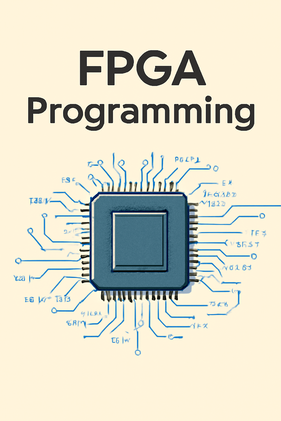
FPGA Programing
Field-Programmable Gate Arrays (FPGAs) are powerful devices used in various applications such as digital signal processing (DSP), communication systems, and control systems. The chapter delves into how FPGA programming resolves real-world issues in these domains, covering practical examples including FIR filters, QPSK modulators, and PID controllers. A hands-on project integrates concepts from various fields to provide a comprehensive understanding of FPGA-based system development.

Environmental Engineering
Environmental management in India involves various levels of government authorities responsible for water supply, sewerage disposal, solid waste management, and pollution control. This chapter outlines the roles of central, state, and local bodies, highlighting their specific mandates and collaborative efforts. National missions further strengthen the framework for ensuring effective environmental governance and resource management.

Hydrology & Water Resources Engineering
Dams and spillways are crucial for water management, providing storage, flood control, and hydroelectric power generation. Various types of dams, including embankment, gravity, arch, and buttress dams, are designed based on site conditions and material efficiency. The chapter discusses the components and types of spillways, highlighting their roles in water release and energy dissipation.

Professional Practice, Law and Ethics
Intellectual Property (IP) encompasses creations of the mind, protected by laws that allow creators to benefit from their work. The chapter outlines various forms of IP, including copyrights, trademarks, patents, designs, and trade secrets, and explores their definitions, protections, and durations. It details the laws surrounding copyrights and patents in India, highlighting the historical context, infringement criteria, and enforcement mechanisms available for protection.

Intelligent Transportation Systems
Intelligent Transportation Systems (ITS) integrate advanced technologies into transportation to enhance safety, efficiency, and sustainability. The chapter covers its historical development, benefits, data collection methods, and operational frameworks across various global contexts. Emphasis is placed on the importance of telecommunications and data management in facilitating effective traffic management and improving passenger experience.

Sustainable and Green Construction
Ethical considerations in sustainable construction extend beyond mere compliance; they encompass a commitment to environmental stewardship and social responsibility. Key ethical issues such as transparency, safety, and equity are essential to ensure positive social impacts like improved health and community revitalization, while managing potential challenges such as gentrification and accessibility. Engaging stakeholders through transparent communication and inclusive practices fosters trust and enhances project outcomes, contributing to lasting social value in the built environment.

Instrumentation & Sensor Technologies
Frequency domain analysis is crucial for understanding the dynamics of civil engineering structures by revealing underlying periodicities and resonance. The chapter discusses principles of frequency analysis, the importance of tools like the Fourier Transform, and applications in diagnostics and environmental monitoring. It also highlights methods to enhance signal clarity, detect issues, and effectively combine data for deeper insights.

Structural Design-II
This module discusses the design of steel columns and their bases, detailing the procedures for single and built-up sections, managing axial loads and bending, and ensuring stability through effective lacing and battens. Additionally, it covers the appropriate design of bases and the critical design parameters to maintain safety and structural integrity under various loading conditions.
